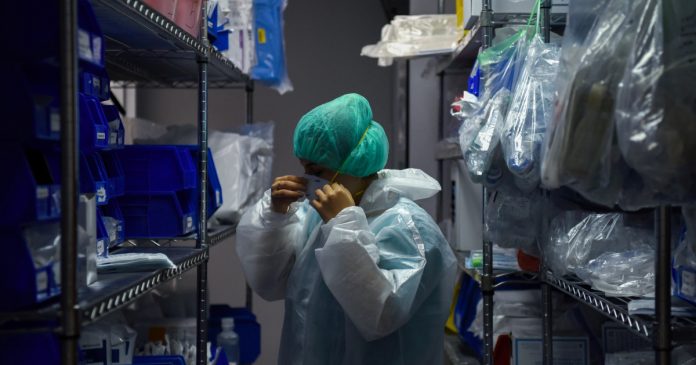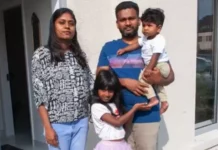[ad_1]
When he was volunteering as a medical translator at New York’s community-organised COVID-19 Bengali hotline during the spring lockdown last year, Lala Tanmoy Das received a call from a woman who could not speak English.
“It was from a Bangladeshi woman in her 50s. She displayed shortness of breath, was profusely sweating and having chest pain, radiating to the jaw and arm,” says Das, 31, who as an MD-PhD student immediately recognised that her condition was critical.
“In medical terms, we would translate this as experiencing a heart attack.”
While trying to keep the caller calm, Das urged her to call the emergency services. His job as a volunteer for the COVID hotline was only to give general advice about the pandemic.
But the woman told him: “No one understands me at the emergency services. I’m just going to sleep till my family member comes home.”
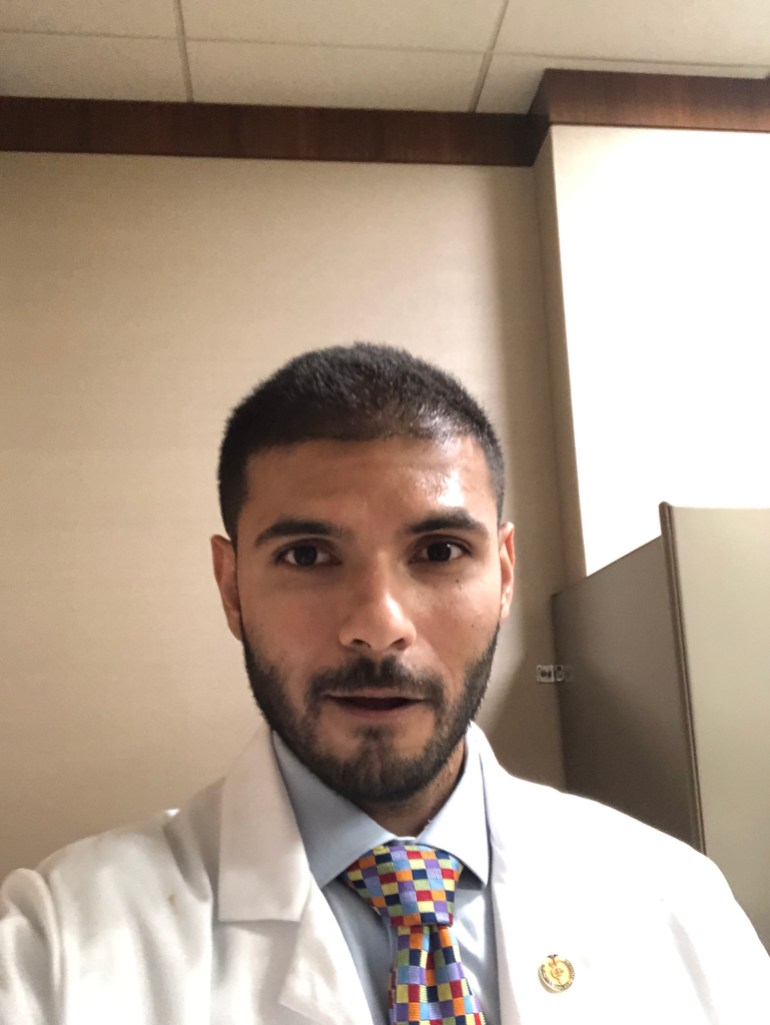 Lala Tanmoy Das volunteered as a medical translator for a COVID hotline in New York [Photo courtesy of Lala Tanmoy Das]
Lala Tanmoy Das volunteered as a medical translator for a COVID hotline in New York [Photo courtesy of Lala Tanmoy Das]
She waited for 30 minutes for her daughter to return. The daughter, who spoke fluent English, immediately called the emergency services and took her mother to the hospital. But it could have ended in tragedy, says Das.
“If the daughter had not come back home in time, the woman would have died because of a heart attack,” he says, adding that he learned what had happened when the woman called him back to let him know she was OK after she was discharged from hospital.
“The language barriers in emergency services, such as 911 [the emergency services number in the US] and inside ambulances, prevents some people from seeking health care. 911 has interpretation services available, but manoeuvring that system is difficult. Now, with COVID-19, there’s such a surge in demand, sometimes it’s just not feasible for them to transfer people to adequate care,” Das explains.
‘My mother doesn’t understand the risks’
Recent reports in the United Kingdom and Sweden [pdf] reveal how COVID-19 has exacerbated existing health disparities for ethnic minorities and increased the barriers to healthcare they experience.
Muneera Iqbal, 29, accompanies her 60-year-old Pakistan-born mother, who has cirrhosis of the liver, to all her routine checkups at the Queen Elizabeth Hospital in Birmingham, the UK’s second-largest city.
“My mother does not speak English, so she refuses to attend her appointments without me,” explains Iqbal.
However, because of the pandemic, hospitals now have restrictions in place, and no longer allow family members to accompany patients. For that reason, Iqbal’s mother has not attended any follow-up appointments in the last year. Any further appointment cancellations could be dangerous for her.
Cirrhosis can eventually lead to liver failure, with serious complications that can be life-threatening. Regular monitoring of her complete blood count and liver chemistries allow the doctors to keep an eye on her condition.
“My mother doesn’t really understand the risks involved in continuously missing her appointments,” says Iqbal.
“When we are at the hospital, I am translating for her. The eyes of the doctor are focused on my mum, while the ears are with me. For my mum, she listens and moves her eyes between me and the doctor.”
In Birmingham, about 47,000 people are thought not to speak English, according to a 2011 Census report on population and migration. According to the Office for National Statistics (ONS), some 863,000 people in the UK are “non-proficient” in English, and those who cannot speak English well are more likely to be in poor health. Sixty percent of non-English speakers in the country are women.
 Health workers transport a patient outside the Queen Elizabeth Hospital in Birmingham, UK, amid a rise in coronavirus cases in December 2020 [File: Carl Recine/Reuters]
Health workers transport a patient outside the Queen Elizabeth Hospital in Birmingham, UK, amid a rise in coronavirus cases in December 2020 [File: Carl Recine/Reuters]
“I make sure I go to the hospital with my mother at all times,” says Iqbal. “If she is to go alone, it would be difficult for her to define her feelings. She would also feel very uncomfortable to be examined by a male doctor.”
Speaking in Urdu, her mother adds: “After all, English is not my language. If I go alone I won’t be able to understand anything. Maybe I will misunderstand something. I won’t be able to find my way around the hospital either.”
A patient’s concern about being able to communicate with medical staff can cause additional anxiety on top of any worry about their medical condition. Communication difficulties can also impede a patient’s ability to consent to and understand prescribed medication and proposed treatments.
Dr Sabrina Germain, one of the co-authors of the UK report on health disparities, from City Law School London, says that even when ethnic minority and migrant women can speak English, they often lack the confidence to ask questions about their care or to find out about the support that is available to them. “This is known as ‘health illiteracy’, which discourages them from accessing mainstream services, leading them to rely on their communities for support,” she explains.
Limited health literacy is also a major problem for, in particular, older members of the UK’s Somali community, according to Dr Fatumo Abdi, a public health specialist based in London. “The health services are complicated for everybody, it’s not even an easy process for someone who speaks the language or was born here.”
Similar findings have been observed in the US, where about 8 percent of the population is known to have Limited English Proficiency (LEP), which means that they speak English less than “very well”.
 An ambulance crew waits with a patient outside the Coast Plaza Hospital emergency room during a surge in COVID cases in Los Angeles, California, US, in December 2020 [File: David Swanson/Reuters]
An ambulance crew waits with a patient outside the Coast Plaza Hospital emergency room during a surge in COVID cases in Los Angeles, California, US, in December 2020 [File: David Swanson/Reuters]
Dr Mara Youdelman, a managing attorney at the National Health Law Program, which is based in Washington, DC, and advocates for the healthcare rights of low-income and marginalised individuals says: “First, many English speakers have low health literacy and find it challenging to understand the terminology used in healthcare. Second, LEP individuals face additional hurdles because of an inability to communicate, especially when competent language services are not provided.”
To accommodate the language needs of different ethnic groups, Western health systems are usually expected to provide interpreter services, health information in multiple languages, and a list of staff language skills available.
In the US, federal laws require healthcare providers to offer oral interpretation and written translated materials, while in the UK, the General Medical Council guidance states that the NHS is obliged to make sure that language arrangements are made to meet the communication needs of the patient. This particular duty has not been suspended during the pandemic. The same standard measures are applied across national health care services in Europe.
However, many healthcare organisations fail to provide translation services and, instead, rely on the patient, family members, friends, or unqualified staff instead, says Dr Youdelman. She adds that while this has been an ongoing issue in healthcare provision, not being able to have family members with them during the pandemic has made the situation even worse for patients.
“Being an interpreter requires specific skills and abilities. Even if someone is bilingual, they often are not qualified to interpret. Either because they do not understand the role and ethics of interpreting or because they do not know the specialised healthcare terminology in English and the non-English language,” she says.
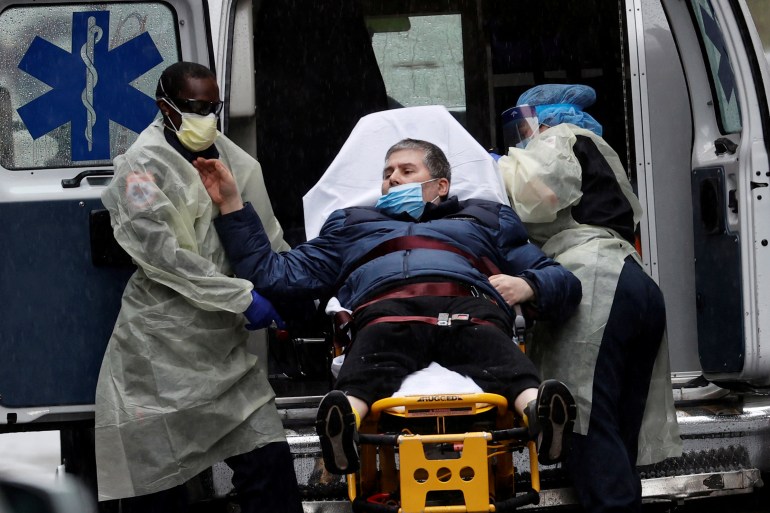 A patient is transported at the emergency entrance outside Mount Sinai Hospital in Manhattan, New York [File: Mike Segar/Reuters]
A patient is transported at the emergency entrance outside Mount Sinai Hospital in Manhattan, New York [File: Mike Segar/Reuters]
“The lack of effective communication can result in misdiagnosis, delayed or denied treatment, severe harm and even death.”
An investigation by ProPublica, a non-profit newsroom in New York, into the deaths of non-English speaking COVID-19 patients in emergency rooms, found that if the patients had spoken English, or had access to an interpreter, they would have received better care. The report, which was published on March 31, 2020, further pointed out that even before the pandemic, many people struggled to gain access to interpreters for a range of regular procedures and those who could not speak English often faced a poorer quality of care with negative consequences.
Wrong medication means life or death
Das tells of another life-threatening event – which he heard about from colleagues – that could have been avoided if a professional interpreter had been available. “At New York City emergency room, a Bangladesh-born woman, who spoke zero-English, arrived with Cellulitis [an infection of the deeper layers of skin]. Her skin was badly affected. During the admission interview, which was challenging as she was very nervous, the emergency staff didn’t ask what her medication allergies were and gave her an antibiotic. The woman suffered an allergic reaction. On top of her Cellulitis skin condition, she turned bright red.”
Administering the wrong drug to a patient can result in severe harm and even death. But it happens with alarming regularity. In the US, a 2016 study by Johns Hopkins, the research university, found that more than 250,000 people die in the US every year because of medical errors.
When it comes to errors caused by language barriers, a 2016 study by CRICO Strategies, a division of the risk-management foundation of the Harvard medical institutions, found that 1,744 deaths over five years could have been prevented with better communication between healthcare professionals and patients.
In the UK, another report commissioned by the government in 2018 found that nearly 22,000 deaths take place a year in the NHS because of medication errors.
When healthcare staff can speak a particular minority language, a patient’s health outcomes are likely to be positive, according to studies.
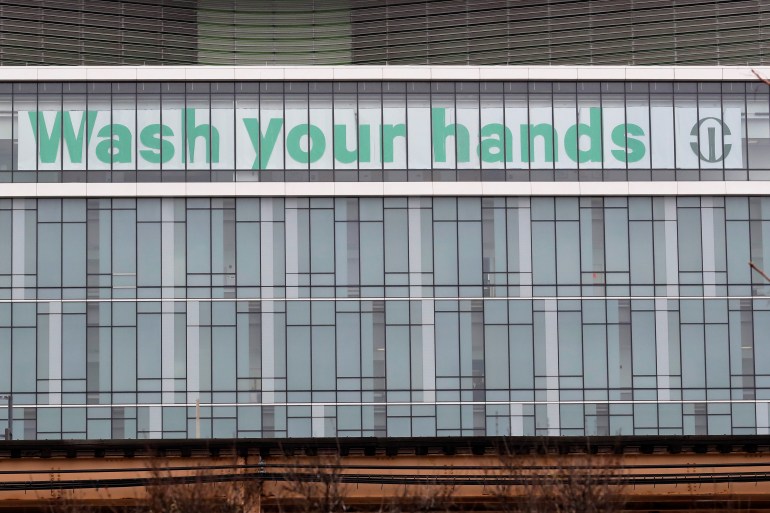 A sign with the words ‘Wash your hands’ is displayed at Rush University Medical Center in Chicago, during the COVID-19 pandemic in March 2020 [File: Nam Y Huh/AP Photo]
A sign with the words ‘Wash your hands’ is displayed at Rush University Medical Center in Chicago, during the COVID-19 pandemic in March 2020 [File: Nam Y Huh/AP Photo]
At Rush Medical Centre in Chicago, where a large number of Spanish-speaking patients have been admitted during the COVID-19 pandemic, suffering from the virus, Dr Susan Lopez, an assistant professor in hospital medicine is one of the few Latino Spanish-speaking physicians. She has translated for Mexican, Puerto Rican, Caribbean and South American patients.
“When you’re translating in a medical setting, nothing can compare to actually speaking the language. Even if I am completely covered in PPE [personal protective equipment which guards against the COVID-19 virus], certain cultural experiences are shared, I can identify with, or at least understand. It gives me a better insight into how to take care of a patient,” she says.
“Although we were very attuned with social determinants of health and language barriers, the pandemic has really amplified them and put those things to the forefront.”
This pattern is repeated in the UK, where there has been a rise in demand for remote medical interpreting services during COVID-19, according to DA Languages, a translation service in Manchester, for example.
 Dr Susan Lopez is one of the few Spanish-speaking physicians at Rush Medical Center in Chicago [Photo courtesy of Dr Susan Lopez]
Dr Susan Lopez is one of the few Spanish-speaking physicians at Rush Medical Center in Chicago [Photo courtesy of Dr Susan Lopez]Lost in translation
While such language challenges are hard enough for many in the settled diaspora populations, they can be harder for refugees and asylum seekers in need of medical care.
Molly Green, who has researched language barriers and the health of Syrian refugees in Germany and has been published in the American Journal of Public Health, says: “Individuals who are part of the settled diaspora chose to come to Germany. They had the opportunity to mentally prepare, possibly to learn German, identify connections in-country to assist with finding work and a place to live.
“On the other hand, refugees are not able to make these same choices. They came because it was a place of safety.
“The lack of Arabic speakers working in refugee and healthcare services in Germany is a barrier in meeting the needs of the newly-arrived refugee population.
“We know that language-learning can be extremely difficult for those who have experienced trauma. Many older refugees are struggling to learn German. This is concerning as they are likely to be the people who will need to access the healthcare system the most.”
 Medical staff get dressed in personal protective equipment before tending to COVID-19 patients at the Ankara City Hospital ICU, in Turkey, in October 2020 [File: Chris McGrath/Getty Images]
Medical staff get dressed in personal protective equipment before tending to COVID-19 patients at the Ankara City Hospital ICU, in Turkey, in October 2020 [File: Chris McGrath/Getty Images]
Similarly, a study by the Journal of Migration and Health shows that although, during the pandemic, refugees and undocumented migrants in Turkey were allowed access to health services for COVID-19 associated issues, cultural, social and language obstacles remain a problem.
Refugees and asylum seekers also have legal worries to contend with. In the US, Dr Lopez says that many undocumented minority patients delay going to a hospital until they are seriously unwell. “I’ve had patients from the Mexican-American community, Ecuadorians and Guatemalans tell me: ‘I was afraid that if I came to the hospital my name would be in the system, immigration would know I was here and I would be deported from the US.’”
Dr Youdelman adds: “People of colour are more likely to be uninsured and thus have difficulty accessing care and services. Individuals’ immigration status may also make them fearful of accessing care.”
Culture clash
The issue of accessing medical care goes beyond just the language barriers; various aspects of culture, including wellness beliefs, attitudes, traditions and practices, can also affect successful healthcare delivery.
“Every single population is different in what their needs are, what their traditions are, what their culture is, and that influences who they are and their overall health outcomes,” says Dr Syra Madad, an epidemiologist and senior director of special pathogens at New York City Health and Hospitals.
Among the Chinese community in Houston and Los Angeles, for example, there is a strong preference for self-treatment and home remedies, according to research published in the Journal of Community Health in 2000. Natural remedies are popular and accepted widely in many ethnic Chinese populations.
 Hospital staff work at the United Memorial Medical Center’s coronavirus ICU in Houston, Texas, in June 2020 [File: Callaghan O’Hare/Reuters]
Hospital staff work at the United Memorial Medical Center’s coronavirus ICU in Houston, Texas, in June 2020 [File: Callaghan O’Hare/Reuters]
Similarly, says Das: “In India, a lot of people will take homoeopathic medicine. This is what I have seen in India myself, then I see that translated here in the US.
“So, sometimes for primary care, we will have a couple of patients who will come in and say: ‘Oh Doctor, I don’t want to take this for my diabetes, I’m just going to take what my homoeopathic doctor has sent me. I’m here because you asked me to come.’
“One response as a doctor for me is … I often get frustrated. Maybe it [homoeopathic medicine] works a little, I’m sure there is a science behind it, but it is not something I have studied.”
In some communities, members may seek help from a leading figure in the community – religious ministers, spiritual healers or preachers – before turning to mainstream health services.
“One patient, who also has a jyotishi [astrologer] told me: ‘My astrologer says I should take this [traditional supplements], so I’m not going to have any of these Western medicines’,” says Das.
“I often say, ‘this is the best we can try, but your diabetes is getting worse’ and their diabetes does often get worse. The traditional supplements they sometimes try or hold onto don’t help with the glucose numbers, then things get bad. They may have other issues relating to diabetes, and then that can potentially lead to leg amputation.”
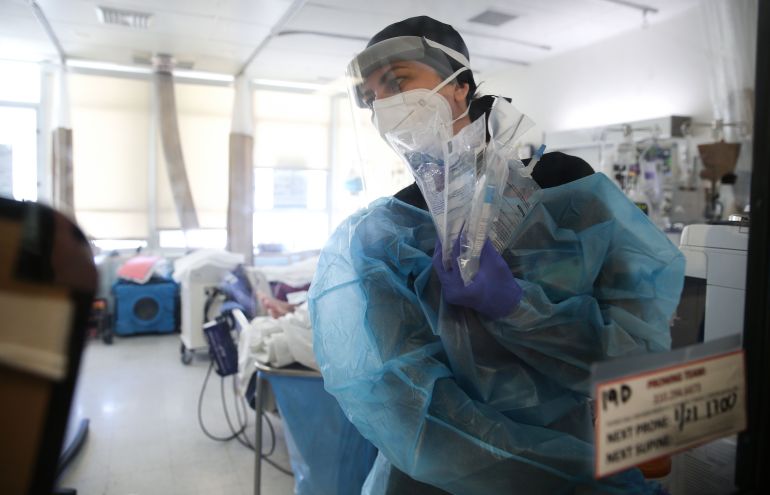 A nurse carries IV bags as she cares for COVID-19 patients in a makeshift ICU at Harbor-UCLA Medical Center in Torrance, California, in January 2021 [File: Mario Tama/Getty Images/AFP]
A nurse carries IV bags as she cares for COVID-19 patients in a makeshift ICU at Harbor-UCLA Medical Center in Torrance, California, in January 2021 [File: Mario Tama/Getty Images/AFP]
A case report published in 2004 in the UK-based Practical Diabetes International Journal, found that there can be a stigma attached to the diagnosis of diabetes within the South Asian communities of the UK, and many patients wish to keep it a secret.
Written by diabetes specialists, the report narrates the case of a young woman of South Asian origin with diabetes, who refused treatment, fearing it would affect her marriage prospects. In some South Asian cultures, if the bride is known to have an illness, the increased marriage dowry can place considerable financial pressure on her family.
It was noted that five years later, the young patient, now married, finally presented herself to surgeons with sight-threatening diabetic retinopathy and axillary abscesses, which then eventually led to serious damage to the back of her eye. Clinicians involved in her previous care had warned this might happen, but she had avoided treatment anyway.
“In the African American population, the Latino population and I’ve seen in the South Asian population in the US, trust is a huge thing. It takes a lot of time to build. They will try to ride out the storm at home, unless somebody forces them to seek healthcare services. There’s just a lot of hesitancy,” says Dr Syra Madad.
Dr Madad’s father, who has been working in the medical field for 50 years, hates being a patient, she says. Five years ago, he suffered a stroke but refused to go to the hospital until he absolutely needed to.
“I was in New York, he was in Maryland, I called him and said ‘I am calling 911 and they will come and get you or you go with my brother, you make the choice yourself, but you’re going’. By the time he went, he, unfortunately, passed the window to get the blockbuster drug to help with strokes and now he is hemiplegic. He is bed-bound.
“It all boiled down to had he gone and sought healthcare services early, we would never be in this position. He would have had a much better health outcome.”
Sometimes, it can be the attitudes deeply rooted within the health systems, along with the behaviours of physicians towards patients, that is a barrier to care.
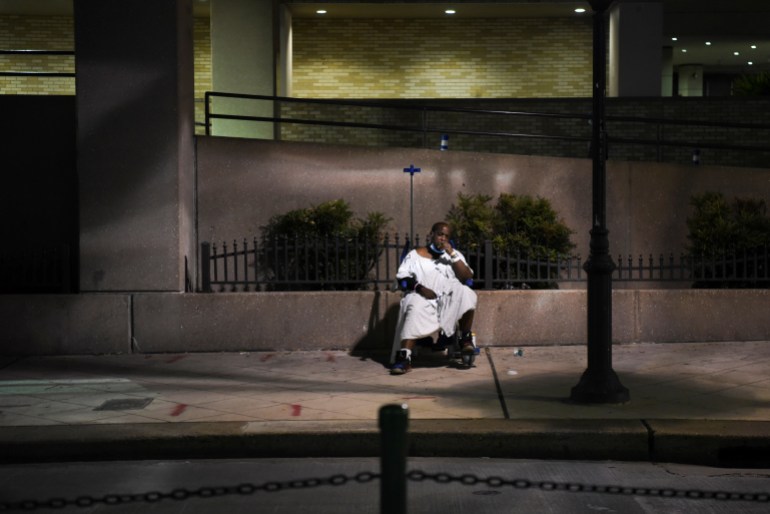 A man in a hospital gown sits in a wheelchair outside of Houston Methodist Hospital in the Texas Medical Center amid a rise in COVID-19 cases, in July 2020 [File: Callaghan O’Hare/Reuters]
A man in a hospital gown sits in a wheelchair outside of Houston Methodist Hospital in the Texas Medical Center amid a rise in COVID-19 cases, in July 2020 [File: Callaghan O’Hare/Reuters]
In the US, Dr Youdelman says: “There’s a mistrust in the healthcare system, due to the legacy of structural racism and governmental policies. Health disparities also exist in significant amounts, with research documenting how Black, Indigenous and people of colour have worse access to care and worse outcomes when they do access care.”
In the UK, Dr Abdi, who is from the Somali community, describes one scenario. “My aunty had an eye infection, waking up every morning with pus coming out of her eye. The doctor took a swab. After that, she didn’t get any response. There was no update. So she asked me to come with her to the doctor.
“At no point in that consultation did the doctor look in our direction. He didn’t examine her and said it will settle down by itself. As we were about to leave, the nurse arrived with the results, which indicated that she has a bacterial infection in her eye. The doctor then said, ‘It seems like you’ve got bugs in your eyes then.’
“That dismissive. There is something about training, for the staff to be able to communicate. Now, my aunt will probably not go back to the GP practice.”
As a doctor, Abdi understands both sides of the coin. “There is something about health literacy and the other side having a responsive health system that is welcoming.”
Building trust
To improve responsiveness towards patients, their cultural practices and health beliefs, Western healthcare systems and their staff need to be culturally and linguistically competent, say professionals. On the other hand, it should also be recognised that each healthcare professional has his or her own individual understanding, language and culture characteristics. However, a recognition, coordination and agreement between the patient’s cultural perceptions and healthcare advice of the medical practitioner, may result in better health outcomes.
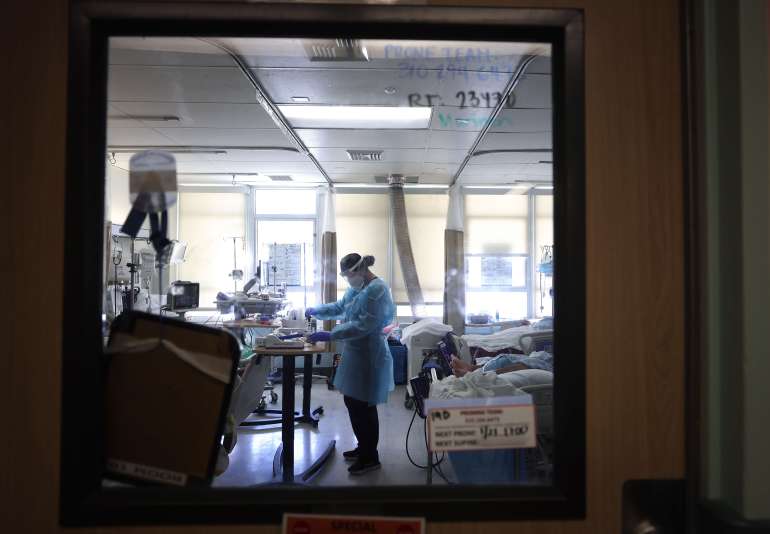 A nurse cares for COVID-19 patients in a makeshift ICU at Harbor-UCLA Medical Center in California, in January 2021 [File: Mario Tama/Getty Images/AFP]
A nurse cares for COVID-19 patients in a makeshift ICU at Harbor-UCLA Medical Center in California, in January 2021 [File: Mario Tama/Getty Images/AFP]
Milko Patrick Zanini, a professor of nursing at the University of Genoa in Italy, recounts combining medical treatment with a sub-Saharan African patient’s culture at a trauma centre in Genoa, Italy.
“She had broken her leg. It was difficult to explain to her that the treatment involved surgery, because, in her culture, it was enough to treat it with cow’s milk. So, we made a compromise. We gave her a glass of milk and she allowed us to continue with the treatment.”
Zanini adds: “The Italian healthcare system is fully public; every single person has the right to access any treatment they need, independent from ethnicity, religion, colour of the skin and gender. That information is inside every single nurse.”
Ethnic minority patients may gradually consent to Western health practices when respect and acceptance towards their language, culture and traditional methods are expressed by healthcare professionals.
“We need to have more diverse medical staff, more training, and a curriculum that is built into our care models moving forward, which talks about implicit bias training, cultural sensitivity and cultural competency. We need to ensure that we meet patients where they are and not where we want them to be,” says Dr Madad.
Structural and institutional racism also need to be addressed, says Dr Youdelman. “We need better demographic data collection so that we can clearly identify health disparities and intervene quickly and decisively to address them.
 An ER physician at Martin Luther King Jr Community Hospital in South Los Angeles, California, receives the coronavirus vaccine on December 17, 2020 [File: Lucy Nicholson/Reuters]
An ER physician at Martin Luther King Jr Community Hospital in South Los Angeles, California, receives the coronavirus vaccine on December 17, 2020 [File: Lucy Nicholson/Reuters]
“We need to shift from a bureaucracy-focused approach to enrolling and accessing healthcare to make enrolling in and accessing healthcare as less technical, complex and burdensome – as much as possible,” she adds.
Connecting with relevant community and faith-based organisations may also help to build trust within minority populations.
“I have been addressing a lot of that for the COVID-19 vaccine,” says Dr Madad. “I’ve been working with a lot of Islamic religious institutions, Imam Bargah [a congregational hall for Shia Muslims], mosques, and talking with the community, telling them why this is important and how the vaccines are developed.”
Dr Lopez adds: “Partnering with those places where patients already have trust will help them understand that we’re not here to give them the wrong message, but we’re here to help them.
“COVID-19 has been a learning opportunity for many healthcare systems. Although we had to adjust during the pandemic, many of these ethnic minority patients are now plugged in and connected to our healthcare system. We’re going to need to anticipate any future adjustments to help take care of these patient populations.”
[ad_2]
Source link

